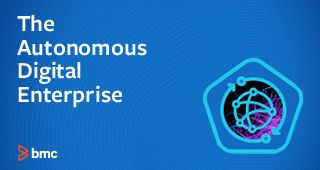As we recognize International Women’s Day and Women’s History Month, we have a great opportunity to celebrate and talk about tangible ways to continue to uplift and advance women in the workplace, particularly in the areas of science, technology, engineering, and math (STEM). As my colleague, Pam Fitzwater-Johansen, noted in a previous blog, mentorship and sponsorship are vital tools women, and really all workers, can use to amplify their voices and move their careers forward.
Mentors and sponsors
We’ve spoken previously about the power of allies and allyship. At BMC, we are continuously working to be allies, and we’re extending that to advocate sponsorship, which goes beyond demonstrating supportive behaviors to taking practical actions to help with career advancement.
Mentors provide support and empathy, and can span management, peers, co-workers, and anyone who has a unique, relevant point of view to share insights, offer advice, and be a sounding board. A sponsor is a senior-level leader and advocate who helps an individual advance their career with skills building, strategic planning, and wisdom to support their journey. A sponsor elevates them in the room where decisions are made, championing them when opportunities arise.
Harvard Business Review shared an excellent step-by-step guide on sponsorship here. The LinkedIn Learning course, “Effective Sponsorship for Sponsors,” offers insights into what a sponsor is and how anyone can become a sponsor through intentional allyship.
Mentors and sponsors each have their own strengths and merits. As Jackie Ferguson from The Diversity Movement shares in Forbes, “Where sponsorship is focused specifically on professional development and career advancement, mentorship can be a more helpful tool for nurturing feelings of belonging and inclusion. Mentors are especially helpful in learning how to navigate workplaces where dimensions of one’s identity are currently or typically underrepresented. A new, nonbinary Gen-Z employee, for instance, may benefit greatly from a voluntary mentor who identifies as LGBTQ+, so long as the two are mutually invested in the relationship.”
In the pre-pandemic world where the majority of workers were onsite, finding and securing mentors and sponsors was an easier feat. With the increased, now mainstream, adoption of remote and hybrid workforces, there’s an opportunity for organizations and leaders to rebuild those same offerings for workers and women who primarily work offsite. According to the most recent Lean In and McKinsey Women in the Workplace study, less than half of companies surveyed offer virtual mentorship and sponsorship programs.
Those virtual programs are increasingly necessary as more women want to work outside an office, and promotional opportunities still elude the majority of women. Only one in ten women wants to work mostly onsite, and many women cite remote and hybrid work options as a top reason for joining or staying with an organization. Respondents said it wasn’t just about flexibility; the safety net of fewer microaggressions and higher levels of psychological safety were equally important considerations.
The study also highlights the still-disproportionate number of women in leadership roles, which can create a vacuum of women at the top to be mentors and sponsors, with only one in four C-suite leaders identifying as a woman, and only one in 20 a woman of color. For every 100 men who are promoted from entry-level roles to management, only 87 women are promoted, and only 82 women of color are promoted. These numbers are also echoed by the LinkedIn Gender Equity in the Workplace economic graph.
For women who do arrive at the top, it’s still a struggle, with 43 percent of women leaders telling Lean In and McKinsey they are burned out, versus 31 percent of male leaders. To help women advance, and maintain balance once they do, organizations have an opportunity to provide flexible work environments and thoughtful wellness benefits that deliver services and support for women at every stage of their lives.
Practical steps
So, how can leaders move the needle to foster inclusion, growth, and advancement for those who identify as women?
In 2023, pay transparency and equal pay for equal roles should be a baseline goal. In 2022, BMC was certified by Fair Pay Workplace (“FPW”) for our efforts to create sustainable fair pay for our employees around the world. FPW certification holds us accountable, reviewing and independently verifying the steps we are taking to achieve global pay equity across gender, race, and intersectional considerations.
Say something nice about an employee or colleague out loud. Write a LinkedIn recommendation or leave positive feedback on your internal employee recognition platform for your outstanding women colleagues and direct reports. You can also cast a wider net and acknowledge the women in your professional networks to support their professional growth.
Employee resource groups (ERGs) exist to give subsets of employees a safe space to gather, discuss individual and shared experiences, and empower each other through education, volunteering, and other collaborative opportunities. At BMC, Women in Technology and Business is our longest-running ERG, fostering open, real discussions among the women who work at BMC.
Curate experiences that are professionally valuable for women—employees and customers—such as user groups, speaker series, and breakout sessions at events. Recently, the BMC Brazil office held a “Control-M for Her” event where female employees, clients, and partners gathered to network and learn more about expanding the capabilities for our Control-M data workflow orchestration solution in their respective tech stacks.
To attract and hire the next generation of talent, make substantive changes that foster a pipeline of strong future leaders, regardless of their backgrounds. Expand opportunities for hiring and advancement—and candidate access—by retooling job descriptions with gender-neutral language and functional requirements that are skills-based. Include anonymous candidate screening technology like career.place into your talent strategy.
Provide enhanced learning and development opportunities. BMC does this through our Grow @ BMC program and by offering LinkedIn Learning memberships to all employees for self-paced, skills-building coursework. All women and women-identifying employees have also been gifted a membership to Uplevyl, a global online community that creates opportunities for women to support one another with professional advice and financial literacy tools.
Hold your team accountable for practicing and promoting inclusive behaviors with ongoing training and resources. CulturePop is a self-paced, micro-learning app that encourages cross-cultural curiosity. BMC’s corporate membership is available to all employees to use within their teams to help expand their cultural awareness.
Encourage organizational, employee, and ecosystem participation in initiatives like UN Women, a United Nations organization dedicated to gender equality and the empowerment of women, and HeForShe, a solidarity movement for gender equality created by UN Women that invites men and boys to engage in and advocate for gender equality in our lifetime. BMC is proud to partner with these organizations to raise funds through our annual Global Move event and to spread awareness throughout the year.
Focus on building environments where women thrive and that inclusively support them in their careers by inspiring them to pursue their goals without barriers. BMC is working toward an important cultural shift that establishes that the inclusion and elevation of more women in tech and business does not equate to a lesser role for men.
Fostering a workplace that is more welcoming to and inclusive of women requires doing the work and investing resources to establish, maintain, and grow supportive mechanisms—from cultural changes to dialogues to opportunities, and more. It’s necessary work to bring the next generation of women into the STEM workforce, help them advance, and ensure that the Autonomous Digital Enterprise includes everyone.







